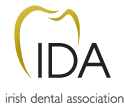Gum disease, or as dentists call it, periodontal disease, is a serious infection of your gums which if left untreated, can lead to tooth loss. It comes in 2 forms.
- Gingivitis
- Periodontitis
1: Gingivitis
Gingivitis is the basic form of periodontal disease. It causes the gums to become red, swollen and they may bleed easily. There is ususally little or no discomfort at this stage. Gingivitis is often caused by poor oral hygiene. The good news is that it is reversible, and our hygienist Siobhá is trained to correct the problem for you and show you how it can be prevented from recurring.
2: Periodontitis
When gingivitis is left untreated it can advance to periodontitis. As a result, plaque can spread and from below the gum line. Toxins produced by the bacteria in plaque can irritate the gums and stimulate a chronic inflammatory response in which the body in essence turns on itself, and the tissues and bone that support the teeth are broken down and destroyed. Gums seperate from the teeth, forming pockets (spaces between the teeth and gums) that become infected.
As the disease progresses, the pockets deepen and more gum tissue and bone are destroyed. Often, this destructive process has very mild symptoms. Eventually, teeth can become loose and may need to be removed.
What are the causes of gum disease?
Plaque build up is the main cause of gum disease. This is the sticky film that forms around the teeth. There are other risk factors that predispose you to gum disease such as smoking, diabetes, hormonal imbalance and genetics.
Did you know that there is a strong link between gum disease and heart disease? Also there is a higher risk of respiratory disease and in diabetics, gum disease can effect the effectiveness of insulin. Even in expectant mothers, it has been shown that those who have gum disease, may have lower weight babies. So you see, gum disease may not just effect your dental health, but it can also seriously effect your general health as well.
What are the signs and symptoms of gum disease?
In the early stages of gum disease, there are often very few symptoms, and in many people, the disease has progresses significantly before they actually seek treatment. Symptoms may include the following:
- Redness or bleeding gums, especially when brushing or flossing
- Swollen gums
- Bad breath / bad taste that is persistent
- Gum shrinkage, resulting in an apparant lengthening of teeth
- Loose teeth
Management of gum disease
Excellent Oral Hygiene: This is the cornerstone of successful treatment of gum disease. You have got to do a great job in keeping your teeth clean – otherwise the treatment won’t work! Our hygienist, Siobhán, is really good at showing you how to do this, but you must understand that excellent oral hygiene is a life-long commitment.
Initial Therapy: This involves cleaning out all the jolagra and calculus (that’s the hard stuff) from underneath your gums. We numb you up for this, so you don’t feel it and we use special ultrasonic instruments to do this as it is quicker and more effective. Sometimes we may have to reduce the bite to prevent excessive force on teeth that have less bone around them. Also, other treatments, such as replacing fillings that have ledges on them, may need to be carried out at the end.
Re-evaluation: This is usuallu out 6 weeks after the initial therapy. We look at how well you are cleaning your teeth and how your gums have reacted to the initial therapy. If everything is working well, then we place you on or maintainence programme, which means getting your teeth cleaned every 3 to 6 months. If things are not working well, then we may have to send you to a gum specialist to fix any remaingin problems – don’t worry, we know a really great one! The important thing to remember, however is for you to maintain excellent oral hygiene – if you do this, then you usually win!
For more information please click here





